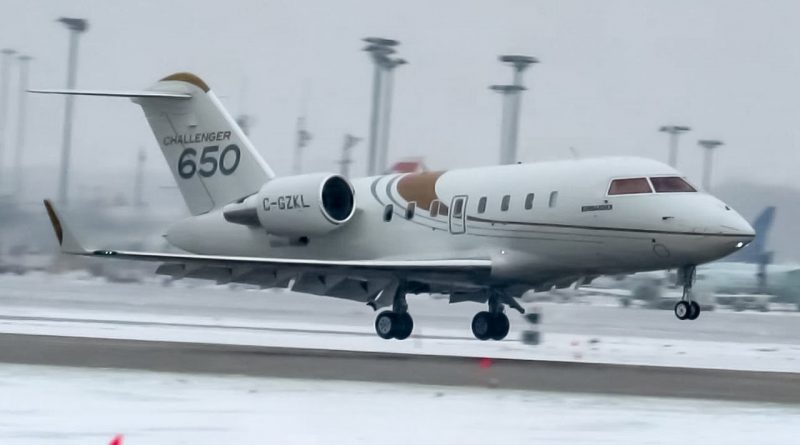About the common type certificate for the CRJ and the Challenger 650
Some of ours readers have pointed out to us that the CRJ and Challenger 650 type certificate was the same and its transfer to Mitsubishi could cause problems for Bombardier if modifications to the Challenger 650 were required.
As a matter of fact, both models of aircraft are under Transport Canada type certificate A-131, so we’ve decided to make a few check to have a better understanding of the situation.
What is a type certificate
The type certificate is the first permanent document issued for an aircraft program.
All information about the performance and characteristics of an aircraft are recorded and all their compliance with the rules of certification and airworthiness. The first objective of a type certificate is to guarantee the safety of an aircraft type. The role, function and operation of each of the installed systems are also explained in detail.
The type certificate also contains all the information and technical specifications of all the parts that go into an airplane type. It describes the method of manufacturing and assembling all the systems that are installed as well as the method of assembling the aircraft. This is to ensure that each aircraft manufactured under a type certificate are identical and that they will all have exactly the same behavior in flight or when subjected to extreme conditions.
It is strictly forbidden to modify an aircraft without having completed an application for an supplemental type certificate (STC) and submitted it to the competent authorities for approval. For example: a builder cannot change the type of rivet for assembling an aircraft without submitting a STC. When robots are used to assemble the fuselage sections, the make, model and serial number of the machines are recorded in the type certificate.
The type certificate for aircraft the size of the Challenger 650 and the CRJ is an extremely complex document that count hundreds of thousands of pages and contains all the drawings and plans of an airplane. In theory, you can still apply for STC without having access to this document, but in fact this is virtually impossible. To have access to the type certificate documents, the holder of the type certificate for an aircraft the size of the Challenger 650 will charge a price ranging from one hundred thousand dollars to several million depending on the complexity of the change to be made and its market value.
Any difference between an aircraft and the type certificate leads to the suspension of the certificate of airworthiness and I cannot fly until its conformity has been validated.
The case of the Challenger 650 and the CRJ
Bombardier Business Aircraft media relation Manager Mr. Mark Masluch told us the following about the Challenger 650 and CRJ type certificate:
“We confirm that Bombardier is working with Transport Canada to divide / un-merge the certificate. The Challenger family will have its own certificate under the responsibility of Bombardier Aviation, as will MHI, which will have a certificate specific to the CRJ.
That said, from an engineering and support point of view, the programs have been supported by different groups for some time. The transition internally as well as for the clients will be smooth. “
Technically, Bombardier must re-apply for a type certificate in order to de-merge it from the CRJ. But in fact, it is the same aircraft that has already done all the necessary tests to validate its specificaations. Transport Canada may use the original documents for the new application without the public being endangered. At worst Bombardier will have to submit the original documentation again (as well as the dust that comes with it) in order to obtain a fair new type certificate for the Challenger 650.
>>> Follow us on Facebook and Twitter


As a person who knows a lot of the details, let’s just say that splitting the FAA Type Certificate was the most complicated part. FAA Order 8110.4C actually prohibits splitting Type Certificates, likely because it might be an easy way for manufacturers to “orphan” older and less profitable models. In fact, a type certificate holder has obligations to ensure the continuing airworthiness of all of their certified products (even if there’s a single aircraft still flying in the fleet!), and the only way to get out of that obligation is to surrender the Type Certificate. You couldn’t do that if your newer and more profitable models were on the same Type Certificate because you’d also lose the ability to manufacture those newer profitable models (like the Challenger 650), so to guard against older models being split off into a separate type certificate and then having that type certificate immediately surrendered (and becoming a Continued Operational Safety headache to the FAA COS folks), the FAA Order 8110.4C has a section prohibiting the splitting of TCs. Of course, Bombardier was successful in splitting the FAA Type Certificates in the end (FAA TC A21EA was kept for the Bombardier Challengers only, and a new FAA TC A21EA-1 was created for MHIRJ’s CRJs only) however let’s just say they had to convince the FAA AIR policy folks that there wasn’t any risk of orphanining the CRJs even if production would likely end soon (MHIRJ’s parent MHI has established a large portion of its Aviation portfolio in the USA, and was buying the CRJ program because of it’s sought-after aftermarket revenue stream, so it’s a quite credible Type Cert Holder for the CRJs for the time being, at least in the FAA’s eyes), and ultimately get an FAA deviation from that Order. Kudos to the Bombardier Airworthiness team for pulling it off in short order.